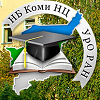Mineralogical and Geochemical Features of Cave Fossilization of Bone Detritus on the Example of Imanay Cave (South Urals)
Abstract
Keywords
Full Text:
PDF (Русский)References
Amirkhanov Kh.A., Bronnikova M.A., Taymazov A.I. 2013. O sledakh ognya na stoyanke oldovana Aynikab 1 v Tsentralnom Dagestane [About traces
of fire at the site Oldovan Ainikab 1 in Central Dagestan]. In: Ancient Caucasus: the crossroads of Europe and Asia. SPb: IHMC RAN, 2013. pp. 7–19. (in Russian)
Vishnyatskiy L. 2010. Neandertaltsy: istoriya nesostoyavshegosya chelovechestva (Neanderthals: History of Failed Humanity). SPb, Nestor-History, p. 312. (in Russian)
Voynar A.O. 1960. Biologicheskaya rol mikroelementov v organizme zhivotnykh i cheloveka (Biological role of microelements in the body of animals and humans). Moscow: Higher school, p. 541. (in Russian)
Votyakov S.L., Kiseleva D.V., Shchapova Yu.V., Smirnov N.G., Sadykova N.O. 2009. Fizikokhimicheskiye kharakteristiki iskopayemykh kostnykh ostatkov mlekopitayushchikh i problema ikh otnositelnogo vozrasta. Chast 2. IK- i radiospektroskopiya. [Physical and chemical characteristics of
fossil mammalian bone remains and the problem of their relative age. Part 2. IR and radio spectroscopy]. Yekaterinburg, Goschitsky, p. 82. (in Russian)
Gimranov D.O., Kosintsev P.A., Nurmukhametov I.M., Nekrasov A.E. 2017. Pervaya nakhodka dikoobraza (Hystrix sp.) i kabana (Sus scrofa) v
pozdnem pleystotsene Yuzhnogo Urala [First discovery of a porcupine (Hystrix sp.) and a wild boar (Sus scrofa) in the late Pleistocene of the southern Urals]. In: Fundamental problems of the Quarternary: Results of the study and main directions of research. Moscow, GEOS, p. 89. (in Russian)
Gimranov D.O., Kotov V.G., Rumyantsev M.M., Yakovlev A.G., Sotnikova M.V., Nurmukhametov I.M., Sataev R.M., Kosintsev P.A. 2016. Peshchera
Imanay – novoye paleontologicheskoye i arkheologicheskoye mestonakhozhdeniye na Yuzhnom Urale [Imanay Cave – a new paleontological and archaeological location in the southern Urals]. In: 100th anniversary of the paleontological society of Russia. Problems and prospects of paleontological research: Proceedings of the 62nd session of the Paleontological society of the Russian Academy of Sciences. Saint Petersburg, VSEGEI Publishing, pp. 231–233. (in Russian)
Gimranov D.O., Kotov V.G., Rumyantsev M.M., Silaev V.I., Yakovlev A.G., Yakovleva T.I., Zelenkov N.V., Sotnikova M.V., Devyashin M.M., Plasteeva
N.A., Zaretskaya N.E., Nurmukhametov I.M., Smirnov N.G., Kosintsev P.A. 2018. Krupneysheye v Yevrazii zakhoroneniye iskopayemykh lvov (Carnivora , Filidae, Pantera (Leo) ex gr. fossilisspelaea) [The largest burial of fossil lions in Eurasia (Carnivora , Filidae, Pantera (Leo) ex gr. fossilis-spelaea)]. Reports of the Russian Academy of Sciences, 482(2):234–237. (in Russian)
Gorbunova K.A. 1988. Iz istorii otechestvennoy speleologii (XVIII vek) [From the history of Russian speleology (XVIII century)]. Caves. 21:96–104. (in Russian)
Dublyanskiy V.N., Kozlova I.A. 1994. K istorii izucheniya peshcher Kryma [To the history of the study of the caves of the Crimea]. Proceedings of the Crimean Museum of Local Lore. 8:7–14. (in Russian)
Ivanova V.V., Nikolsky P.A. 2015. O metode stratigraficheskoy privyazki faunisticheskikh ostatkov na osnove fraktsionirovaniya redkozemelnykh
elementov (na primere pleystotsena Severnoy Yakutii) [On the method of stratigraphic binding of faunal remains based on the fractionation of rare
earth elements (on the example of the Pleistocene of Northern Yakutia)]. In: Fundamental problems of the Quaternary, the results of the study and the main directions of further research: Materials of the IX all-Russian meeting on the study of the Quaternary period. Irkutsk: publishing of Institute of geography of the SB RAS, pp. 184–185. (in Russian)
Kokin A.V., Silaev V.I. 2020. O sootvetstvii raspredeleniya mikroelementov v sostave sovremennykh bakteriy zakonu periodichnosti kosmogeokhimicheskoy rasprostranennosti khimi-cheskikh elementov [On the accordance of the distribution of trace elements in the composition of modern bacteria to the law of periodicity of cosmogeochemical distribution of chemical elements]. Bulletin of Geosciences. 7:3–8. (in Russian)
Kolfschoten T., Markova A.K., Simakova A.N., Puzachenko A.Yu. 2008. Ekosistemy maksimalnogo pokholodaniya poslednego oledeneniya (LGM) 24— 17 tys. ln [Ecosystems of maximum cooling of the last glaciation (LGM) 24—17 kyr BP]. In: Evolution of European ecosystems during the transition from the Pleistocene to the Holocene (24—18 kyr BP). Scientific publishing house of KMK, pp. 459– 465. (in Russian)
Kuleshov V.N., Gavrilov Yu.O. 2001. Izotopnyy sostav (δ 13C, δ 18O) karbonatnykh konkretsiy iz terrigennykh otlozheniy Severnogo Kavkaza [Isotopic composition (δ13C, δ18O) of carbonate nodules from terrigenous deposits of the North Caucasus]. Lithology and useful fossils. 2:187–190. (in Russian)
Ovodov N.D. 2009. Itog 50-letnikh paleofaunisticheskikh issledovaniy peshcher Sibiri [The result of 50 years of paleofauna research of Siberian
caves]. In: Caves: protection, history, current state and prospects of scientific research in caves in the territory of the former USSR. Materials of the scientific-practical conference. Krasnoyarsk, pp. 54–65. (in Russian)
Parshukova M.N. 2016. Lvino-medvezhya peshchera Imanay: raskopki kostnogo detrita pleystotsenovykh mlekopitayushchikh [Lion-bear
cave Imanay: excavations of bone detritus of Pleistocene mammals]. In: Geological and archaeological research in the Timan-North Urals region. Reports of the 19th scientific conference. Syktyvkar. Geoprint. 19:77–81. (in Russian)
Silaev V.I., Lyutoev V.P., Petrovskiy V.A., Khazov A.F. 2013. Opyt issledovaniy prirodnykh uglerodistykh veshchestv i nekotorykh ikh sinteticheskikh analogov metodom ramanovskoy spektroskopii [Experience of studying the natural carbonaceous substances and some of their synthetic analogs by the method of Raman spectroscopy]. Mineralogical journal. 35(3):33–47. (in Russian)
Silaev V.I., Ponomarev D.V., Simakova Yu.S., Shanina S.N., Smoleva I.V., Tropnikov E.M., Khazov A.F. 2016. Sovremennyye issledovaniya iskopaemogo kostnogo detrita: paleontologiya, mineralogiya, geokhimiya [Modern studies of fossil bone detritus: paleontology, mineralogy, geochemistry]. Bulletin of the Institute of Geology, Komi science center UB RAS. 5:19–31. (in Russian)
Silaev V.I., Simakova Yu.S., Parshukova M.N., Gimranov D.O. 2018. Kostenosnye elyuvialnye grunty v Imanayskoy peshchere na Yuzhnom Urale [Bone-Bearing eluvial soils in the Imanay cave in the southern Urals]. In: Problems of mineralogy, petrography and metallogeny. Materials of scientific readings in memory of P. N. Chirvinsky. Issue
Perm: Perm University Publishing House, pp. 168–184. (in Russian)
Silaev V.I., Ponomarev D.V., Slepchenko S.M., Bondarev A.A., Kiseleva D.V., Smoleva I.V., Khazov A.F. 2015. Mineralogo-geokhimicheskiye issledovaniya kostnogo detrita pleystotsenovykh mlekopitayushchikh, vklyuchaya drevneyshego v Severnoy Yevrazii sapiyensa [Mineralogical and geochemical studies of bone detritus of pleistocene mammals, including the earliest in northern Eurasia humans]. Vestnik Permskogo universiteta. Geologiya, 4(29):6- 31. (in Russian)
Silaev V.I., Slepchenko S.M., Bondarev A.A., Smoleva I.V., Kiseleva D.V., Shanina S.N., Martirosyan O.V., Tropnikov E.M., Khazov A.F. 2017. UstIshimskaya kost: mineralogo-geokhimicheskie svoystva kak istochnik paleontologicheskoy, paleoantropologicheskoy i paleoekologicheskoy informatsii [Ust-Ishimsk bone: mineralogical and geochemical
properties as a source of paleontological, paleoanthropological and paleoecological information]. Vestnik Permskogo universiteta. Geologiya. 16(1): 1–25. (in Russian)
Silaev V.I., Shanina S.N., Smoleva I.V., Kiseleva D.V., Cherednichenko N.V., Khazov A.F., Tumanova E.A., Pavlov P.Yu. 2019. Opyt ispolzovaniya
mineralogo-geokhimicheskikh svoystv kostnykh ostatkov dlya rekonstruktsii sredy obitaniya na paleoliticheskoy stoyanke Zaozerye (Sredniy Ural) [Experience of using the mineral and geochemical
properties of bone remains for the reconstruction of the habitat at the Zaozerye Paleolithic site (Middle Urals)]. PAJIS. 2:35–77. (in Russian)
Smirnov N.G., Votyakov S.L., Sadykova N.O., Kiseleva D.V., Shchapova Yu.V. 2009. Fizikokhimicheskiye kharakteristiki iskopayemykh kostnykh ostatkov mlekopitayushchikh i problema ikh otnositelnogo vozrasta. Chast 1. Termicheskiy i mass-spektrometricheskiy analizy [Physical and
chemical characteristics of fossil mammalian bone remains and the problem of their relative age. Part 1. Thermal and mass spectrometric analyses]. Yekaterinburg. Goschitsky, p. 118. (in Russian)
Sotnikova M.V., Gimranov V.O. 2017. O nakhodkakh gigantskikh lvov v mustyerskikh sloyakh (pozdniy pleystotsen) peshchery Imanay (Yuzhnyy
Ural) [About the findings of giant lions in the Mousterian layers (Late Pleistocene) of the Imanay Cave (Southern Urals)]. In: Intergrative paleontology: prospects of development for geological purposes. Proceedings of the LXIII session of the Paleontological society of the Russian Academy of Sciences. Saint Petersburg, VSEGEI, pp. 207–208.
(in Russian)
Sotnikova M.V., Kirillova I.V. 2017. Krupnyy predstavitel semeystva Felidae Pantera (Leo) ex. gr. Fossilis-spelaea iz chernoyarskogo allyuviya na nizhney Volge (Rossiya) [A large representative of the family Felidae Pantera (Leo) ex. gr. Fossilisspelaea from the chernoyarskiy alluvium on the lower Volga (Russia)]. In: Fundamental problems of the Quaternary: results of study and main directions of further research: Mater. X all-Russian conference on the study of the Quaternary period, Moscow, GEOS, pp. 317–318. (in Russian)
Formozov A.A. 2019. Iz zapisey o pervobytnom obshchestve [From the records of primitive society]. PAJIS. 1:10–47. (in Russian)
Chikishev A. G. 1973. Peshchery na territorii SSSR (Caves in the USSR). Moscow, Nauka, p. 136. (in Russian)
Yakovlev A.G., Yakovleva T.I., Gimranov D.O. 2016. Melkie pozvonochnye (zemnovodnye, presmykayushchiyesya i mlekopitayushchiye) iz
mestonakhozhdeniya Imanay-1 (Yuzhnyy Ural) [Small vertebrates (amphibians, reptiles and mammals) from the Imanay-1 site (Southern Urals)]. In: Geology, minerals and problems of Geoecology of
Bashkortostan, the Urals and adjacent territories. Ufa, pp. 81–82. (in Russian)
Ambrose S.H. 1990. Preparation and characterization of bone and tooth collagen for isotopic analysis. J. of Archaeolog. Science. 17:431–451.
Argani A., Jeannet M., Argaht J., Erlajeva M. 2007. The big cats of the fossil site Chateau Brecccia Northern Section (Saone-et-Loire, Burgundy, France): stratigraphy, palaeoenvironment, ethology and biochronological dating. Courier Forschunginstitute Senckenberg. 259:121–140.
Barycka E. 2008. Middle and Late Pleistocene Felidae and Hyaenidae of Poland. Faune Poloniae v.2. New Series, p. 228.
Bocherens H. 2019. Isotopic insights on cave bear palaeodiet. Historal biology. 31(4):410–421.
Bocherens H., Drucker D. 2003. Trophic level isotopic enrichments for carbon and nitrogen in collagen: case studies from carbon and ancient terrestrial ecosystems. International J. of Osteoarchaeology. 13:46–53.
Bocherens H., Drucker D.G., Bominigue B., Bridault A., Conard N.J., Cupillard Ch., Germonpre M., Honeisen M., Munzel S.C., Napierala H., PatouMathis M., Stephan E., Uerpmann H.-P., Ziegler R. 2011. Isotopic evidence for dietary ecology of cave (Pantera spelaea) in North-Western Europe: Prey Choise competition and implications for extinction. Quaternary International. 246:249–261.
De Niro M.J. 1985. Postmortem preservation and alternation of in-vivo bone collagen isotope rations in relation to palaeodietary reconstruction. Nature. 317:806–809.
Gimranov D., Kosintsev P. 2020. Quaternary large mammals from the Imanay Cave. Quaternary International (Article in press).
Gimranov D.O., Kotov V.G., Rumyanzev M.M.,Silaev V.I., Yakovlev A.G., Yakovleva T.I., Zelenrov N.V., Sotnikova M.V., Devyashin M.M., Plasteeva N.A., Zarezkaya N.E., Nurmuhametov N.M., Smirnov N.G., Kosintsev P.A. 2018. The Largest in Eurasia Bulking of mineral lives (Carnivora, Felidae, Panthera (Leo) ex gr. Fossilis-spelaea). Doklady Biological Science. 482(1):191–193.
Guthrie R.D. 1968. Paleoecology of the large mammal community in interior Alaska during the late Pleistocene. American Midland Naturalist
:346–363. doi: 10.2307/2423182
Herwartz D., Tutken T., Jochum K.P., Sander P.M. 2013. Rare earth elements systematics of fossil bone revealed by LA-ISP-MS analysis. Geochimica et Cosmochimica Acta. 103:161–183.
Hublin J.-J., Sirakov N., Aldeias V. et al. Iwitial Upper Palaeolithic Homo sapiens from Bacho Kiro Cave, Bulgaria. Natura, 581:299-302. doi:
1038/s4158.6-020-2259-z
James S.R. 1989. Hominid Use of Fire in the Lower and Middle Pleistocene: A Review of the Evidence. Current Anthropology. 30(1):1–26.
Lindahl T.R. 2000. Fossil DNA. Current Biology. 10 (17), PR616. doi: 10.1016/50960-9822 (00)00668-0.
Mc Lennan S.M. 1994. Rare earth element geochemistry and the «tetrad» effect. Geochim. Cosmochim. Acta. 58:2025–2033.
Pitulko V.V., Tikhonov A.N., Pavlova E.Y., Nikolsky P.A., Kuper K.E., Polozov R.N. 2016. Early human presence in the Arctic evidence from 45000-
year-old mammoth remains. Science. 351(6270):260–263.
Silaev V.I., Ponomarev D.V., Kiseleva D.V., Smoleva I.V., Simakova Yu.S., Martirosyan O.V., Vasiliev E.A., Khazov A.F., Tropnikov E.M. 2017.
Mineralogical-geochemical Characteristic of the Bone Detritus of Pleistocene Mammals as a Source of Paleontological Information. Paleontogical Journal. 51(13):1395–1421.
Slimak L., Svendson J.I., Mangerud J., Plisson H., Heggen H.P., Brugere A., Pavlov P.Yu. 2011. Late Mousterian Persistence near the Arctic Circle.
Science. 332:841–844.
Stuart A.J., Lister A.M. 2011. Extinction chronology of the cave lion Panthera spelaea. Quaternary Science Reviews. 30:2329–2340.
Turner A. 2009. The evolution of the guild of large carnivore of the middle and late Pleistocene. J. Quarternary Science Reviews. 4:991–1005.
Tutken T., Furrer H., Venntmann T.W. 2007. Stable isotope compositions of mammoth teeth from Niedorweningen, Switzerland; Implications for the Late Pleistocene climate, environ and diet. Quateruary International. 164–165:139–150.
DOI: http://dx.doi.org/10.17072/psu.geol.19.4.323
Refbacks
- There are currently no refbacks.















